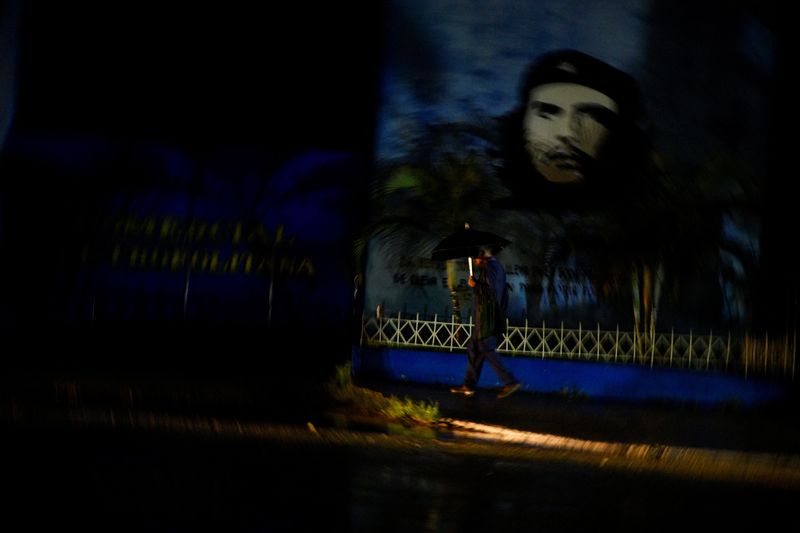By Dave Sherwood and Nelson Acosta
ARTEMISA, Cuba (Reuters) -Cuban authorities mentioned they’d begun restoring energy to the japanese half of the island on Thursday, a day after Hurricane Rafael knocked out the nation’s electrical grid, leaving 10 million individuals at midnight.
The grid collapsed on Wednesday as Rafael tore throughout Cuba with high winds of greater than 115 mph (185 kph), damaging properties, uprooting timber and toppling phone poles.
The hurricane had spun off westward into the Gulf of Mexico the place it not posed a direct risk to land, the Miami-based U.S. Nationwide Hurricane Heart mentioned.
Rafael was the newest blow to the Communist-run nation’s already precarious electrical grid, which simply two weeks in the past collapsed a number of occasions, leaving many within the nation with out energy for days and sparking scattered protests throughout the island.
The Power and Mines Ministry mentioned on Thursday afternoon it was making progress restoring energy to pockets of central and japanese Cuba, however warned the method could be slower in western elements of the island, which had been hardest hit by the storm.
Havana, the capital metropolis of two million, was nonetheless with out energy late within the day on Thursday, and authorities had not mentioned when it could be restored.
The nation’s decrepit oil-fired era crops have struggled to maintain the lights on for many years, however this yr the system collapsed into disaster as oil imports dropped off from allied nations Venezuela, Russia and Mexico.
Rafael was the second hurricane to hit the island in lower than a month after Oscar ravaged japanese Cuba in October, a one-two punch that was sapping extra sources in a rustic already struggling shortages of meals, gas and medication.
Rolling blackouts lasting hours had turn into the norm throughout a lot of Cuba even earlier than the 2 storms struck.
Skies had brightened throughout Havana by late within the day on Thursday. Highway crews and residents labored to clear downed tree limbs, trash and particles that blocked many roadways, although most outlets, banks and most state businesses remained closed.
Greater than 220,000 individuals had been evacuated from low-lying and susceptible areas, officers mentioned, and most had returned to their properties on Thursday. Nobody died because of the storm.
Officers re-opened Havana’s airport at midday. Faculties would keep closed till Monday (NASDAQ:), authorities mentioned.
Rafael grazed the Cayman Islands as a Class 1 cyclone on the five-step Saffir-Simpson hurricane scale earlier than growing energy in lower than 24 hours to the far more highly effective Class 3 that made landfall on Cuba’s southwestern shore.
BREAD BASKET
Artemisa province, a farm province generally known as Havana’s bread basket, took the brunt of the influence from the hurricane. Violent winds flattened a number of excessive pressure energy strains alongside the area’s principal freeway. Downed timber littered roadways within the provincial capital.
The storm tore throughout farm fields simply because the winter planting season was getting underneath means, destroying hundreds of hectares (acres) of banana crops, yucca, beans, corn and rice, in keeping with agriculture officers.
Heavy winds and rain prompted authorities to protectively harvest ripening fruit and veggies slightly than take a complete loss.
“You have to see it to believe it,” mentioned Rosa Martinez, a 62-year-old resident of the close by small city of Toledo.

She mentioned meals was already scarce and too costly.
“If we were having trouble before, now its going to be even worse, that much I’m sure of.”




